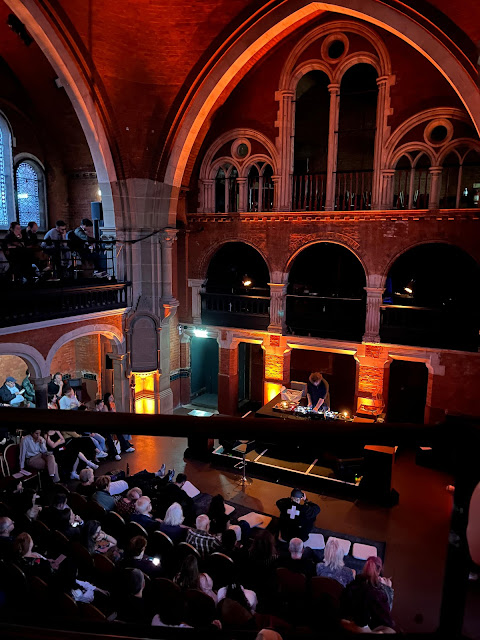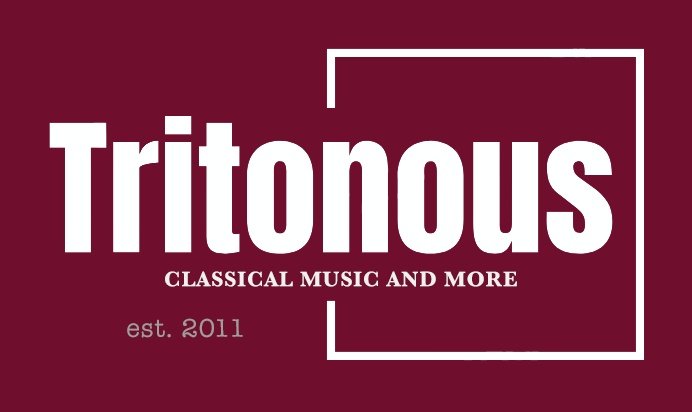 |
| Tai Rona at the launch event for the JMI Archive at Stone Nest |
The Jewish Music Institute (JMI) is the UK’s home for Jewish music and for decades as part of its Archive, JMI has been collecting music resources from families, collectors and foundations. Since last year, composer Na’ama Zisser has been the CEO and artistic director of JMI, and she has been spearheading a project aimed at relaunching and revitalising the Archive. The collection had been in a storage facility in Surrey, some 6,000 items, vinyls, shellac discs, tapes, scores and manuscripts. With the support of the Rothschild Foundation Hanadiv Europe, these materials were catalogued and then experts helped to assess the collection.
Na’ama explains that, as with other archives across the world, the decision was taken to preserve a smaller number of meaningful, rare, and historically important items, rather than keep thousands in storage without proper attention or access, especially without a dedicated physical space. The JMI Archive does not have a building, so it would have been a hard task to keep the full 6,000 items in proper order. A small selection was chosen for the permanent collection, things not commercially available or of historical significance such as rare shellac discs of the world-renowned cantor Gershon Sirota, who died in the Holocaust, rare opera in Yiddish and field recordings of Jewish ritual life in the Middle East.
At a launch event last month, the Archive was brought to Stone Nest in Soho, with a performance by Iranian-American singer Elana Sasson and a curated deep-listening set by DJ and composer Tai Rona, featuring many recordings not heard in decades. The event closed with a late selection by JMI Archive curator Wajima Tapes.
The next stage of the project is digitising the Archive so that it has a life online, and the plan is to have rotating exhibitions online to make sure that the collection audiences before physical copies are sent to a permanent home. More live events around the collection are planned, spotlighting different elements of the Archive, and different musical worlds.
Na’ama explains that the collection is diverse and wide, there is a lot there for everyone – klezmer, field recordings from the Middle East and Eastern Europe, avant-garde, spoken word, theatre works, Yiddish, and spiritual content. Going forward, the Archive is not fixed, in fact, they still receive regular emails offering them material. But, as Na’ama points out, archives are expensive things and their priority remains that of doing justice to their existing collection.
Whilst the Archive represents the Jewish diaspora, in many ways the collection is a sonic portrait of British Jewish families. Donated mainly by British families, the Archive is a portrait of what they listened to, their cherished traditions and inherited sounds. Many shellac recordings feature British cantorial voices.
The JMI is now an Arts Council England NPO and their work extends beyond the Archive. There is a Youth Big Band, led by Sam Eastmond (a big band arranger for John Zorn and co-leader of The Spike Orchestra) whose performances have included ones at the Southbank Centre as part of the London Jazz Festival, collaborating with leading jazz musicians such as saxophonist Jason Yarde. JMI also runs summer schools in klezmer, Yiddish song, and language. Its outreach work brings Jewish music into non-Jewish schools across the UK, including areas beyond London.
There is an academic element to JMI’s work too, one of the world’s few Jewish Music Lectureships, based at SOAS University of London, and funds research students, including the current JMI Archive manager, Edoardo Marcarini — a PhD candidate previously supported by the institute. They plan a 2026 academic conference on North African Jewish Music, blending research and performance.
There is also a renewed focus on new commissions with three projects in the pipeline. An upcoming Ladino/Judeo-Arabic project with support from Britten Pears Arts will feature composers Ana Silvera, Lydia Samuels, and Tomer Damsky and will be creating new work, with R&D beginning in a few weeks. In the Autumn there will be a commission focusing on cantorial and classical music, with a jazz-based commission in 2026. There are also plans for a JMI record label to release some projects. When Na’ama and I spoke, JMI was in the middle of a JustGiving campaign to fundraise for all these various activities.
From the Archive: Haggadah: A Yemenite Home Passover (Hallel/Psalms 113–118) Folkways Records FW 8921 (1953), recorded in Jerusalem by Sam Eskin, notes by Theodore Gaster, released 1957
As a composer, Na’ama’s own work has previously drawn on her Jewish musical identity. Her opera Mamzer/Bastard premiered at the Royal Opera in 2018, blending classical composition with liturgical material and a role written for a cantor. For her, the creative and curatorial roles are deeply intertwined. She continues to compose and release music through Orthodox Records, a Paris-based label.
Support the JMI’s JustGiving campaign
Recordings from the Archive
- Haggadah: A Yemenite Home Passover (Hallel/Psalms 113–118) – Folkways Records FW 8921 (1953), recorded in Jerusalem by Sam Eskin, notes by Theodore Gaster, released 1957. On YouTube
- Ballads, Wedding Songs, and Devotional Piyyutim of the Sephardic Jews of Tetuan and Tangier, Morocco (Alicia Benassayag de Bendayam) – Ethnic Folkways Records FE 4208, recorded by Henrietta Yurchenco. On YouTube
- Morasha: Traditional Jewish Musical Heritage. Includes Bar Mitzvah songs “Lemee zot nirshemet” and “Elohim Chay” (Ch. Dayan, Y. Sabagh, and A. Ben-Loulou). – Ethnic Folkways Records FE 4203. Recorded and annotated by Dr. Amnon Shiloah. Sung in Hebrew, Aramaic, Arabic, Moroccan dialects, Turkish, Ladino, Kurdish. Released 1978. On YouTube
- Chants Des Synagogues: La Haggada, Moroccan cantor Samy Elmaghribi and children reciting Passover seder in French. Released 1963. On YouTube
The blog is free, but I’d be delighted if you were to show your appreciation by buying me a coffee.
Elsewhere on this blog
- The one where Dido kills Aeneas: Oliver Platt radically refocuses Purcell’s opera at Guildhall School – opera review
- Redefining “Success” as a Classical Musician – guest posting
- From kazoo & harpsichord to electronically-augmented ensemble: Alex Paxton’s Delicious is a multi-layered maximalist delight – cd review
- A window onto the sound world of the Tudor Court on progress: Henry VIII on Tour from Ensemble Pro Victoria & Toby Ward – cd review
- Diverse & eclectic: Peter Cigleris & Amaia Quartet in clarinet quintets by Mozart & the 20th century English composer David Gow – concert review
- More emotional resonance than you might expect: Jonathan Dove & Alasdair Middleton’s Itch at Opera Holland Park – opera review
- Intrigued by stories & narratives: members of Apollo’s Cabinet on their musical exploration of 18th century actress Kitty Clive – interview
- Back to the 1890s: Dinis Sousa & the Orchestra of the Age of Enlightenment move out of their comfort zone reveal magic moments in Elgar – concert review
- Anselm McDonnell’s Politics of the Imagination: Dazzling aural journey, political commentary & playfulness combine with serious purpose – cd review
- La straniera: With Helena Dix in top form, bel canto fireworks illuminate a Bellini rarity from the Chelsea Opera Group – opera review
- Home


.jpeg?w=998&resize=998,665&ssl=1)


